Catching parrotfish, with their vibrant colors and unique beak-like mouths, presents a captivating challenge for anglers in tropical and subtropical waters around the world. These colorful reef-dwellers are renowned for their important role in coral reef ecosystems and their delectable flesh, making them a prized catch among recreational and commercial fishermen alike. Successfully targeting parrotfish requires an understanding of their feeding habits, habitat preferences, and behavior patterns.
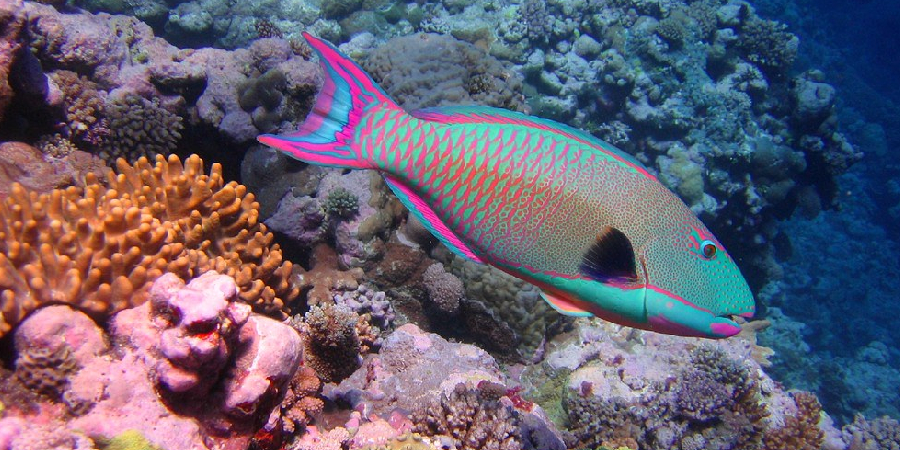
Anglers must also equip themselves with the appropriate gear and techniques tailored to these unique fish. From selecting the right bait and lures to mastering the art of snorkeling or diving to reach their preferred depths, pursuing parrotfish offers an exciting and rewarding fishing adventure. This comprehensive guide will explore the best strategies and tips for how to catch parrot fish, ensuring anglers are well-prepared to reel in these stunning and flavorful reef inhabitants.
Understanding Parrotfish: Colorful and Unique Reef-Dwelling Species
Parrotfish are some of the most visually striking and fascinating inhabitants of coral reefs. Their vibrant colorations, which can range from electric blues and greens to vivid pinks and yellows, make them easy to identify and a favorite among underwater photographers and marine enthusiasts. These colors are not just for show; they play a crucial role in the fish’s social behavior and communication. Additionally, parrotfish possess a distinctive beak-like structure formed by fused teeth, which is used to scrape algae and coral polyps off the reef surface.
This feeding habit not only helps control algae growth but also contributes to the production of sand, as the ingested coral is ground up and excreted as fine particles. The lifecycle of parrotfish is equally unique, with many species undergoing sex changes as they mature, a phenomenon known as sequential hermaphroditism. All these characteristics make parrotfish an integral and captivating feature of coral reef ecosystems.
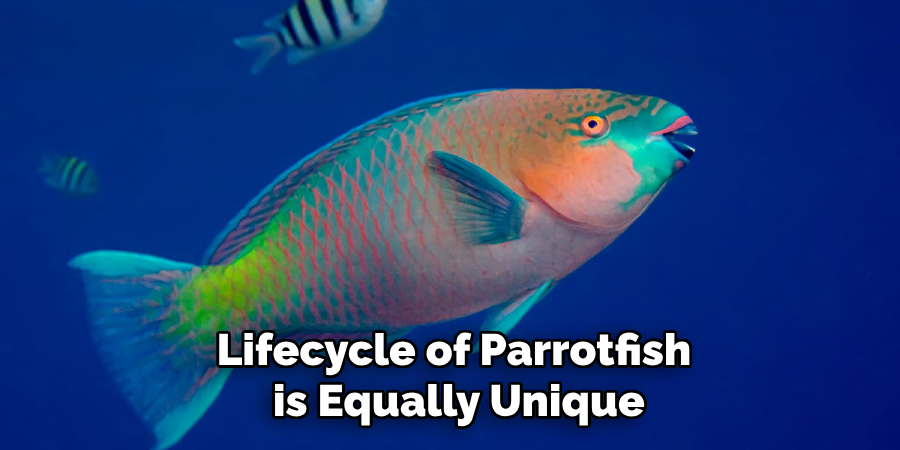
The Challenges and Rewards of Parrotfish Fishing
Fishing for parrotfish presents a unique set of challenges that distinguish it from other types of angling experiences. One of the primary difficulties lies in their habitat: parrotfish are often found in intricate coral reef structures that make accessing them without proper technique and equipment hard. Anglers must navigate these complex ecosystems carefully to avoid damaging the reef and spooking the fish.
Their diet also poses a challenge, as parrotfish primarily feed on algae and coral, making traditional live baits less effective. Instead, specialized artificial lures that mimic their natural food sources are often required to attract them successfully.
Despite these challenges, the rewards of parrotfish fishing are substantial. Parrotfish are known for their tenacious fights, offering an adrenaline-pumping experience for even the most seasoned anglers. Additionally, their stunning colors provide a visual treat that adds to the excitement of the catch. Beyond the thrill of the chase, parrotfish are highly valued for their tender, flavorful meat, which is a delicacy in many tropical cuisines. Successfully catching parrotfish not only brings a sense of accomplishment but also contributes to a memorable and enriching fishing adventure, deeply intertwined with the vibrant and diverse marine life of coral reefs.
Parrotfish Species and Their Physical Characteristics
Parrotfish come in a multitude of species, each exhibiting distinct physical characteristics and unique behaviors that contribute to their role in coral reef ecosystems. One notable species is the Stoplight Parrotfish (Sparisoma viride), recognized for its striking coloration that changes with age and sex. Juveniles are typically bright red with white spots, while adult males display an array of vivid greens and blues with yellow markings that resemble a stoplight.
Another prominent species is the Queen Parrotfish (Scarus vetula), known for its dazzling blue and green hues and a distinctive facial pattern that resembles a crown or mask. The Princess Parrotfish (Scarus taeniopterus) is smaller in size but equally captivating, characterized by its turquoise body and yellow fins.
All parrotfish share common physical traits, such as their beak-like dental structure formed by fused teeth, which allows them to efficiently graze on algae and coral. These robust dental plates are powerful enough to erode coral structures, playing a crucial role in bioerosion and reef health. Additionally, parrotfish possess pharyngeal teeth within their throats to further grind the ingested material into sand.
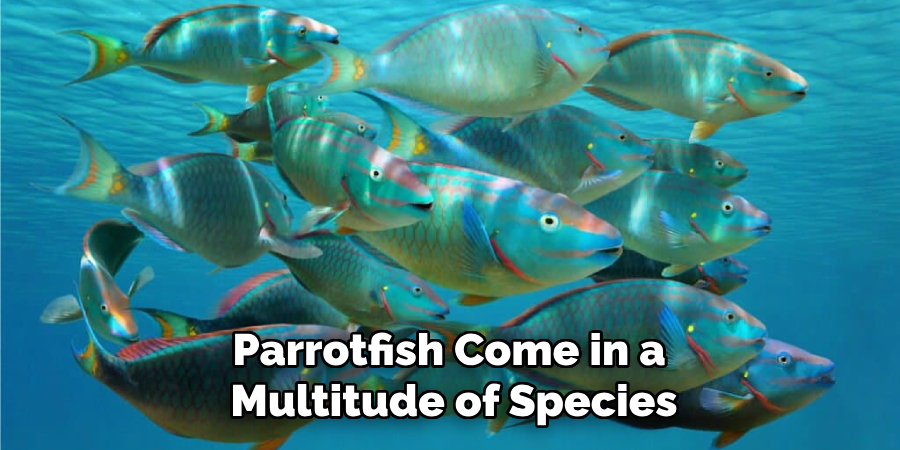
Their elongated, laterally compressed bodies facilitate agile swimming, allowing them to navigate the complex reef environments effortlessly. Vibrant colorations, often with patterns specific to each species, not only enhance their visual appeal but also play roles in social interactions and mating displays. Understanding these diverse species and their physical attributes enriches the fishing experience and underscores the ecological significance of parrotfish in maintaining the balance of coral reef ecosystems.
Understanding Parrotfish Biology and Ecology
Exploring the biology and ecology of parrotfish reveals the intricate mechanisms that underpin their role in coral reef ecosystems. Parrotfish possess a unique digestive system adapted to their herbivorous diet, which primarily consists of algae scraped from coral surfaces. The ingested material passes through a specialized gut where it is broken down efficiently, with the undigested coral material being expelled as fine sand particles, contributing to the formation of sandy beaches over time.
Ecologically, parrotfish play a pivotal role as bioeroders and algae grazers. By controlling algal populations, they prevent algae from overgrowing and suffocating the coral reefs, thus maintaining a healthy balance necessary for coral regeneration and growth. This grazing activity promotes coral diversity and resilience, making parrotfish indispensable to reef health.
Parrotfish are also known for their complex social structures and reproductive strategies. Many species exhibit sequential hermaphroditism, where individuals may change sex during their lifetime, often starting as females and transforming into dominant males. This adaptability ensures genetic diversity and effective breeding within populations. Social behavior amongst parrotfish often involves forming harems, led by a dominant male who oversees a group of females, ensuring hierarchical stability and reproductive success.
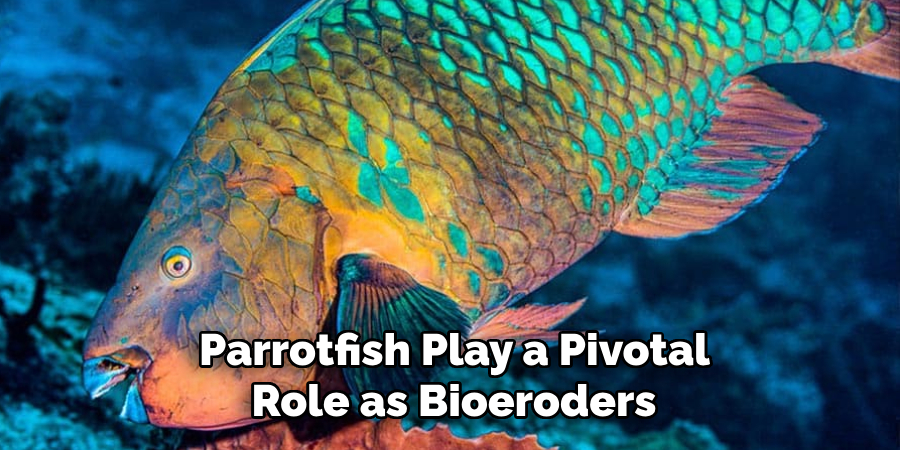
Furthermore, parrotfish contribute significantly to the reef’s nocturnal dynamics. Some species exhibit the fascinating behavior of creating mucous cocoons for protection against predators while they sleep. This distinctive adaptation highlights their evolutionary ingenuity in surviving the diverse threats present in coral reef environments.
An in-depth understanding of parrotfish biology and their ecological functions underscores their importance not only as a target for anglers but also as key players in the sustainability and vibrancy of coral reef ecosystems worldwide.
Identifying Parrotfish Habitat
Parrotfish are predominantly associated with tropical and subtropical coral reef environments, where the structural complexity and biodiversity offer both food and shelter. These vibrant fish are primarily found in the shallow waters of the Indo-Pacific region, the Caribbean, and the Red Sea. Specific habitats within these regions can vary significantly, extending from sheltered lagoon reefs to the outer reef slopes, depending on the species and their unique ecological requirements.
Shallow coral reefs offer ideal conditions for parrotfish due to the abundant algal growth on coral structures, which constitutes their primary food source. The reef’s intricate formations provide numerous hiding spots to evade predators and serve as breeding grounds where they can lay eggs in protected crevices. Parrotfish are often seen during the day, actively grazing on algae and coral, while at night, they seek refuge within the reef to avoid nocturnal predators.
Additionally, some parrotfish species have adapted to seagrass beds and mangrove forests, which are critical habitats that support juvenile stages of their lifecycle. These environments offer ample food and protection from larger predators until they mature and migrate to the coral reefs. Seagrass beds, in particular, play a role in the parrotfish’s diet, supplementing their nutrition with a variety of benthic algae.
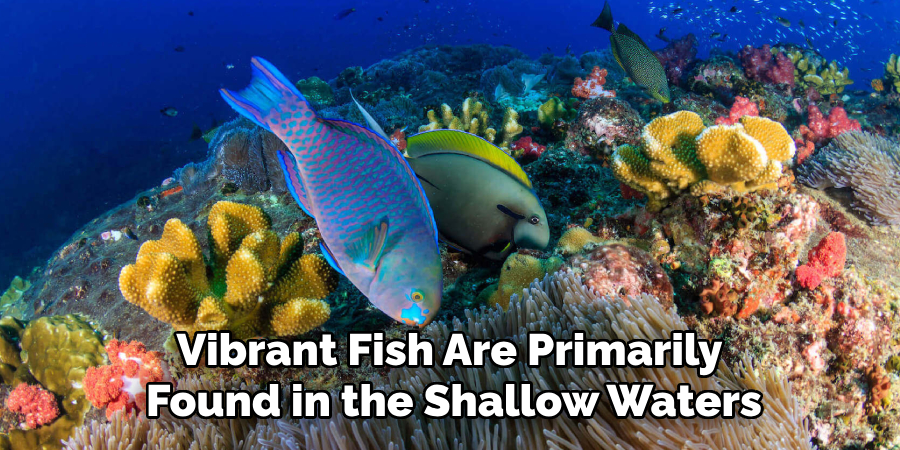
Understanding the specific habitat preferences of different parrotfish species is crucial for their conservation and the management of coral reef ecosystems. Protecting these habitats from destructive practices such as overfishing, coral bleaching, and coastal development ensures that parrotfish populations continue to thrive, maintaining their vital role in the health and sustainability of coral reefs around the globe.
10 Methods How to Catch Parrot Fish
Method 1: Using Fresh Algae as Bait
Parrot fish primarily feed on algae and bits of coral, so using fresh algae as bait can be highly effective. Collect algae from the area you plan to fish to ensure it’s something the parrot fish are accustomed to. Use a medium-light spinning rod with a reel spooled with 10-15 pound fluorocarbon line, which offers sensitivity and low visibility. Rig a small hook with a piece of algae and cast it near the coral reefs where parrot fish are feeding. Let the bait drift naturally with the current. This method leverages the parrot fish’s natural diet and can entice even the most cautious fish to bite.
Method 2: Fishing with Small Crustaceans
Parrot fish also eat small crustaceans, making them an excellent bait choice. Use a medium spinning rod and reel with 15-20 pound fluorocarbon line. Rig a live or dead small crustacean, such as shrimp or crabs, on a small hook. Cast your bait near coral structures and let it settle close to the bottom. Parrot fish will be attracted to the movement and scent of the crustaceans. Ensure your bait is fresh, as parrot fish can be particular about their food. This method is particularly effective in areas with high parrot fish activity, where they naturally forage for crustaceans.
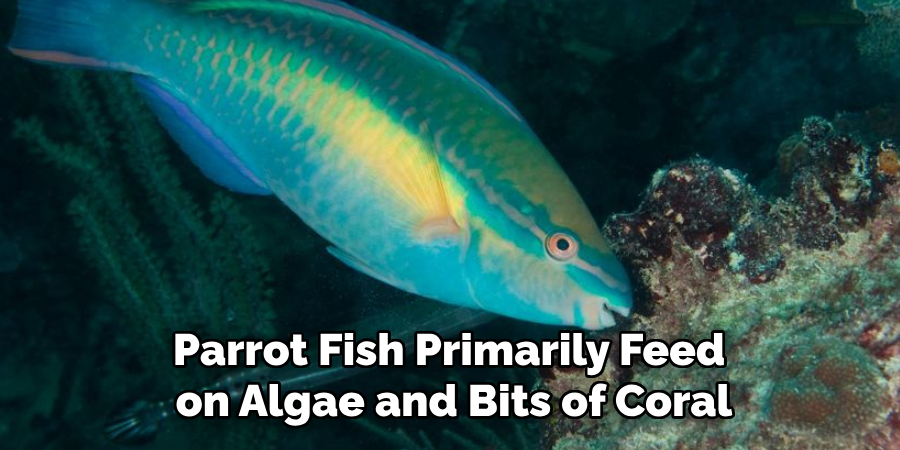
Method 3: Spearfishing
Spearfishing is a popular method for catching parrot fish, especially in clear waters where visibility is high. Use a spearfishing gun or pole spear suited for medium-sized fish. Equip yourself with a wetsuit, mask, snorkel, and fins to navigate the water efficiently. Approach the coral reefs quietly and look for parrot fish feeding on algae or coral. Aim for a clean shot to avoid damaging the fish or the coral. Spearfishing requires precision and patience but allows you to selectively target larger parrot fish. Ensure you follow local regulations and guidelines to protect the marine environment.
Method 4: Drift Fishing
Drift fishing involves letting your bait drift naturally with the current, an effective method for catching parrot fish. Use a medium spinning rod and reel with 15-20 pound fluorocarbon line. Rig a piece of algae or a small crustacean on a small hook. Position your boat up-current of the coral reef and let your bait drift along the structure. This method mimics the natural movement of parrot fish’s food sources and can trigger a feeding response. Adjust the depth and speed of your drift to match the conditions and increase your chances of success.
Method 5: Chumming
Chumming involves dispersing small pieces of bait in the water to attract parrot fish to your fishing spot. Use a mixture of crushed coral, algae, and small crustaceans to create an effective chum. Use a medium-light spinning rod with a reel spooled with 10-15 pound fluorocarbon line. Rig a piece of fresh algae or a small crustacean on a small hook and cast it into the chum slick. The scent and small particles in the chum will attract parrot fish, increasing your chances of a bite. Chumming is especially effective in areas with strong currents, which can help disperse the chum and attract more fish.
Method 6: Bottom Fishing
Bottom fishing near coral reefs can be highly effective for catching parrot fish. Use a medium-heavy spinning rod and reel with 20-30 pound braided line for strength and sensitivity. Rig a piece of algae, small crustacean, or cut bait on a bottom rig with a 1-2 ounce sinker to keep your bait close to the reef. Cast your bait and let it settle on the bottom, where parrot fish are likely to forage. The key is to keep your bait stationary and close to the reef, where parrot fish naturally feed. This method requires patience and careful monitoring of your line for subtle bites.
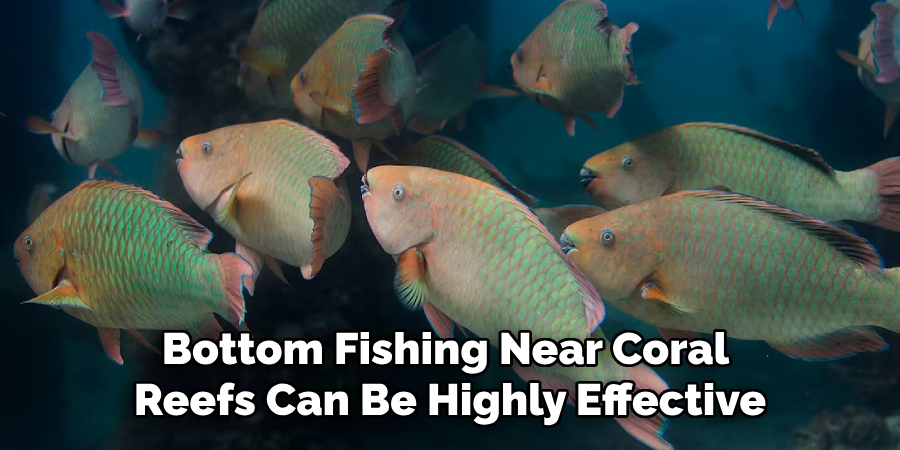
Method 7: Using Artificial Lures
Although parrot fish primarily feed on natural food sources, they can also be caught using small, brightly colored artificial lures that mimic their diet. Use a medium-light spinning rod with a reel spooled with 10-15 pound fluorocarbon line. Select small jigs, soft plastics, or spinners in colors that resemble algae or crustaceans. Cast your lure near coral structures and retrieve it slowly, mimicking the natural movement of parrot fish prey. This method can be particularly effective in areas with high fishing pressure, where fish might be wary of natural baits.
Method 8: Free-Lining
Free-lining involves using no weight or very minimal weight, allowing your bait to drift naturally in the water. Use a medium spinning rod with a reel spooled with 15-20 pound fluorocarbon line. Rig a piece of fresh algae, small crustacean, or cut bait on a small hook. Cast your bait near the coral reef and let it drift naturally with the current. The lack of weight allows your bait to move more freely, making it more appealing to parrot fish. This method is particularly effective in clear, calm waters where parrot fish are actively feeding.
Method 9: Sight Fishing
Sight fishing involves visually locating parrot fish and casting your bait directly to them. Use polarized sunglasses to reduce glare and enhance visibility in the water. Equip a medium-light spinning rod with a reel spooled with 10-15 pound fluorocarbon line. Rig a piece of fresh algae or a small crustacean on a small hook. Move quietly along the coral reef and look for feeding parrot fish. Once you spot a target, cast your bait ahead of the fish’s path and let it drift naturally. Sight fishing requires patience and a keen eye but can be highly rewarding when you successfully target and catch parrot fish.
Method 10: Using Fish Traps
In regions where it is legal and ethical, using fish traps can be an effective method for catching parrot fish. Use a fish trap designed for reef fish, baited with algae, small crustaceans, or cut bait. Position the trap near coral reefs where parrot fish are known to feed. Leave the trap for several hours or overnight, depending on local regulations and conditions. The bait will attract parrot fish into the trap, allowing you to catch multiple fish at once. This method is less active but can be highly efficient for gathering a larger number of parrot fish.
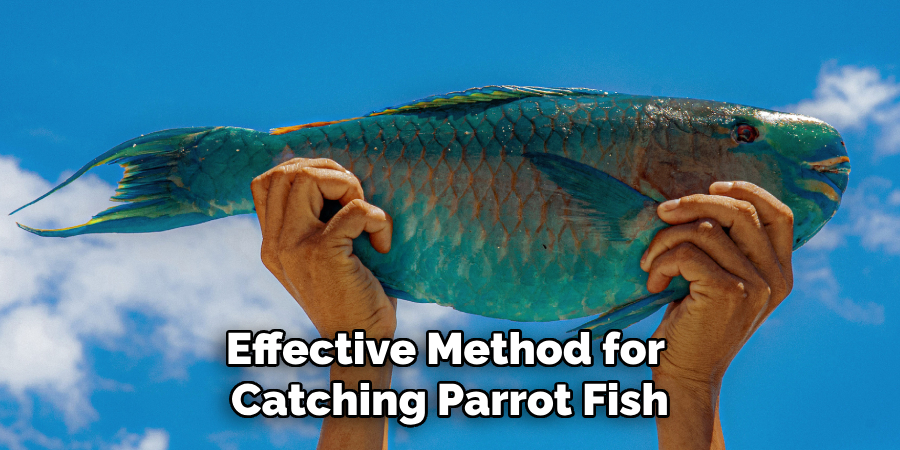
Conclusion
Catching parrot fish requires a combination of the right techniques, understanding their behavior, and using appropriate gear. By mastering these ten detailed methods, you can enhance your fishing experience and increase your chances of success. Whether you prefer using fresh algae, small crustaceans, or artificial lures, each method offers unique advantages and challenges.
Understanding the habitat and feeding habits of parrot fish, along with selecting the appropriate gear and techniques, is crucial for effective fishing. Stay observant, be adaptable, and enjoy the rewarding experience of catching these vibrant and spirited fish in their natural environments. Hopefully, this article gave you some helpful tips about how to catch parrot fish successfully, so now that you have the proper knowledge on how to get the job done, why not give it a try today?
About the Author
Jennifer Branett is the author of Fishy Kayak and an expert in fish-related fields, with over 10 years of experience. Her work blends passion for fishing with a commitment to conservation.
Educational Background
Degree: Bachelor’s in Marine Biology
Institution: University of California, Santa Barbara
Specializations: Aquatic ecosystems, fish behavior, and sustainable practices
Professional Experience
Conservation Projects:
Collaborated with local organizations to restore aquatic habitats
Developed educational programs on sustainable fishing practices
Publications:
Authored articles for fishing magazines and environmental journals
Featured speaker at fishing expos and conservation conferences
Key Areas of Expertise
Fishing Techniques:
Kayak fishing strategies
Freshwater and saltwater fishing methods
Environmental Stewardship:
Advocacy for sustainable fishing
Promoting biodiversity in aquatic environments
Awards and Recognition
Recipient of the [Specific Award Name] for contributions to marine conservation
Recognized as a leading voice in the fishing community by [Organization/Publication Name]
Community Engagement
Workshops and Seminars:
Regularly hosts events to educate anglers on sustainable practices
Engages with youth programs to inspire the next generation of fishers
Online Presence:
Maintains an active blog sharing tips, stories, and conservation efforts
Engages with followers on social media to promote fishing ethics
Personal Interests
Enjoys kayaking in scenic locations
Passionate about photography, capturing the beauty of nature
Advocates for local conservation efforts in her community
